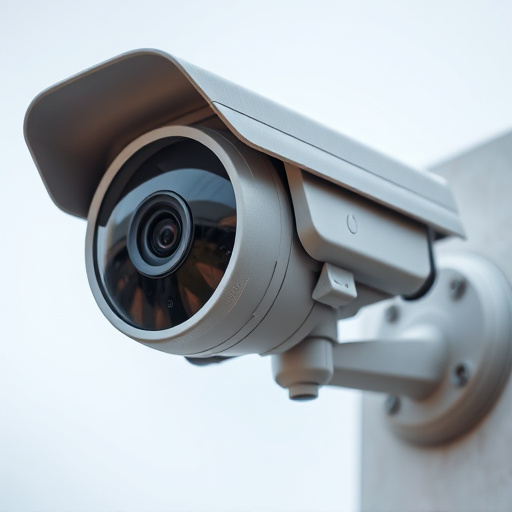Placing dummy security cameras at strategic heights (6-9 feet or 2-3 meters) effectively simulates real surveillance while preserving privacy, deterring potential threats. Follow the Dummy Security Camera Height Guidelines based on environment: open spaces (7-9 feet), urban areas (align with common observation points), and rural landscapes (slightly lower). Realistic fake cameras with adjustable mounting options cater to various needs, from security to filmmaking, while adhering to guidelines for maximum realism.
In today’s digital era, enhancing security measures has become paramount. One innovative solution gaining traction is the use of realistic-looking fake surveillance equipment, offering a cost-effective way to deter crime and provide peace of mind. This article explores the intricacies of dummy security camera placement, from visual guides on optimal positioning to legal considerations for their deployment. We delve into various types, ideal height guidelines (Dummy Security Camera Height Guidelines), and real-world use cases, empowering readers with knowledge to make informed decisions.
- Understanding Dummy Security Camera Placement: A Visual Guide
- Factors Affecting Ideal Dummy Camera Height
- Types of Fake Surveillance Equipment and Their Realistic Use Cases
- Legal Considerations: When and Where to Deploy Mock Cameras
Understanding Dummy Security Camera Placement: A Visual Guide
Placing dummy security cameras strategically is key to creating a convincing simulation that can fool even the most discerning eye. When considering dummy security camera height guidelines, remember that realistic placement mimics genuine surveillance setup. Generally, cameras should be mounted at eye level or slightly elevated, mirroring common installation practices. This means positioning them around 6-8 feet (1.8-2.4 meters) above the ground, which approximates typical indoor viewing angles.
Visual guides can assist in achieving accurate dummy camera placement. Refer to manufacturer instructions and online tutorials for detailed advice on aligning and orienting the cameras. Ensure the simulation accurately reflects real-world security setups by considering factors like camera visibility, field of view, and coverage areas. The goal is to create an authentic appearance that enhances security measures without compromising privacy.
Factors Affecting Ideal Dummy Camera Height
The ideal height for a dummy security camera is influenced by several factors, offering a nuanced approach to creating an effective surveillance setup. One key consideration is the vantage point it provides—higher up, the better the view, especially in large or open spaces. However, excessive height might draw unnecessary attention, defeating the purpose of using fake equipment. Thus, placing dummy cameras at mid-to-upper eye level for adults (around 7-9 feet or 2.1-2.7 meters) is often recommended.
Another critical aspect is the surrounding environment and landscape. In urban settings with buildings or trees, aligning the camera’s field of view with common observation points can make it more convincing. Conversely, in rural areas with open fields, a slightly lower placement might be more suitable to mimic natural line-of-sight perspectives without appearing too obtrusive. Following these dummy security camera height guidelines ensures both functionality and realism in the setup.
Types of Fake Surveillance Equipment and Their Realistic Use Cases
Surveillance equipment comes in various forms, but realistic-looking fake surveillance cameras have gained popularity for both security and creative purposes. These dummy cameras serve as an effective deterrent to potential intruders due to their lifelike appearance and adherence to industry standards. They mimic genuine security hardware with precise details, from the casing to the lens design, and often include LED indicators that mimic real-time activity.
Use cases for these fake surveillance devices are diverse. Property owners can install them as a cost-effective alternative to actual cameras, deterring theft or vandalism without the hefty price tag. Filmmakers and event organizers use realistic dummy cameras to create immersive sets, while security professionals rely on them for training purposes. Additionally, with adjustable mounting options and variable camera angles, these fake surveillance equipment can be tailored to various environments, ensuring a discreet yet vigilant presence. Adhering to recommended Dummy Security Camera Height Guidelines further enhances their realism and effectiveness.
Legal Considerations: When and Where to Deploy Mock Cameras
When considering the deployment of realistic-looking fake surveillance equipment, such as dummy security cameras, it’s crucial to navigate legal considerations carefully. The placement and use of mock cameras are subject to regional laws and regulations regarding privacy and surveillance. Property owners or businesses must adhere to specific guidelines, especially when it comes to public spaces and visible camera placements.
In many jurisdictions, there are strict rules about the height at which dummy security cameras can be installed. The Dummy Security Camera Height Guidelines typically recommend keeping them below eye level from a standing position to avoid inadvertently capturing sensitive personal activities or areas where privacy is expected. This ensures that the use of mock cameras aligns with legal and ethical standards, preventing any potential infringement on privacy rights.
Realistic-looking fake surveillance equipment, or dummy security cameras, offer a cost-effective solution for various security needs. By understanding the ideal placement and height guidelines (Dummy Security Camera Height Guidelines), as well as different types and legal considerations, you can effectively utilize these devices to enhance security measures without breaking the bank. Armed with this knowledge, folks can now navigate the world of dummy cameras with confidence, fostering a safer and more secure environment in today’s digital era.
